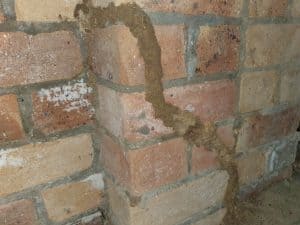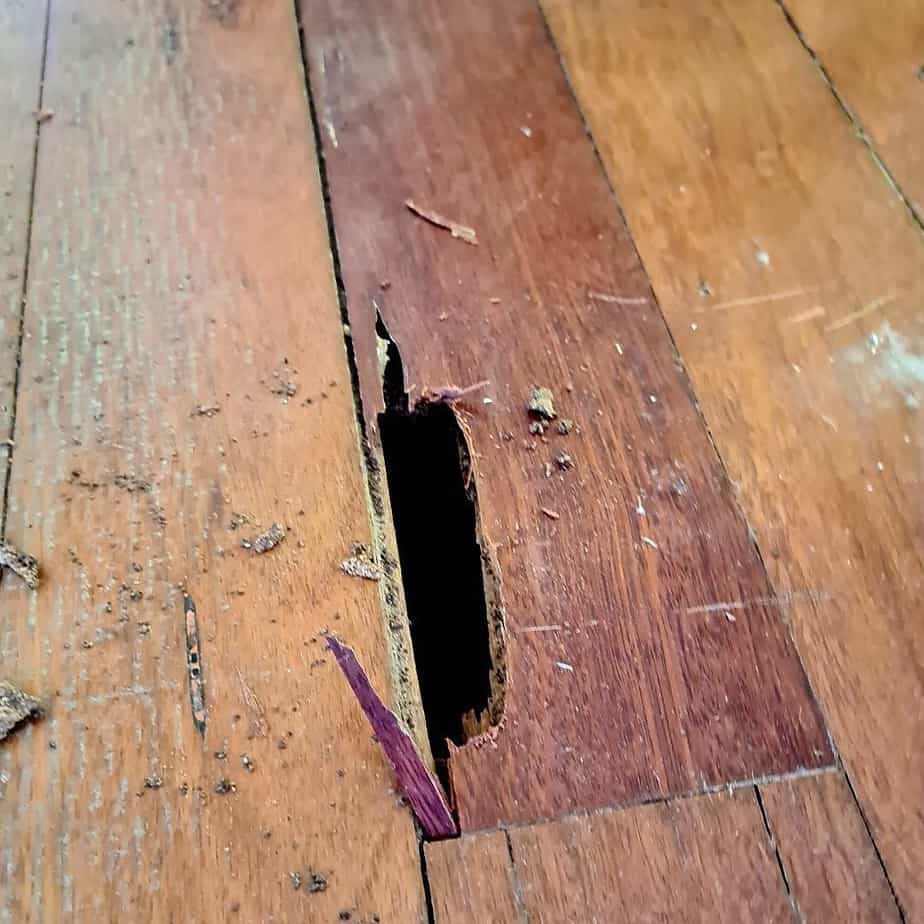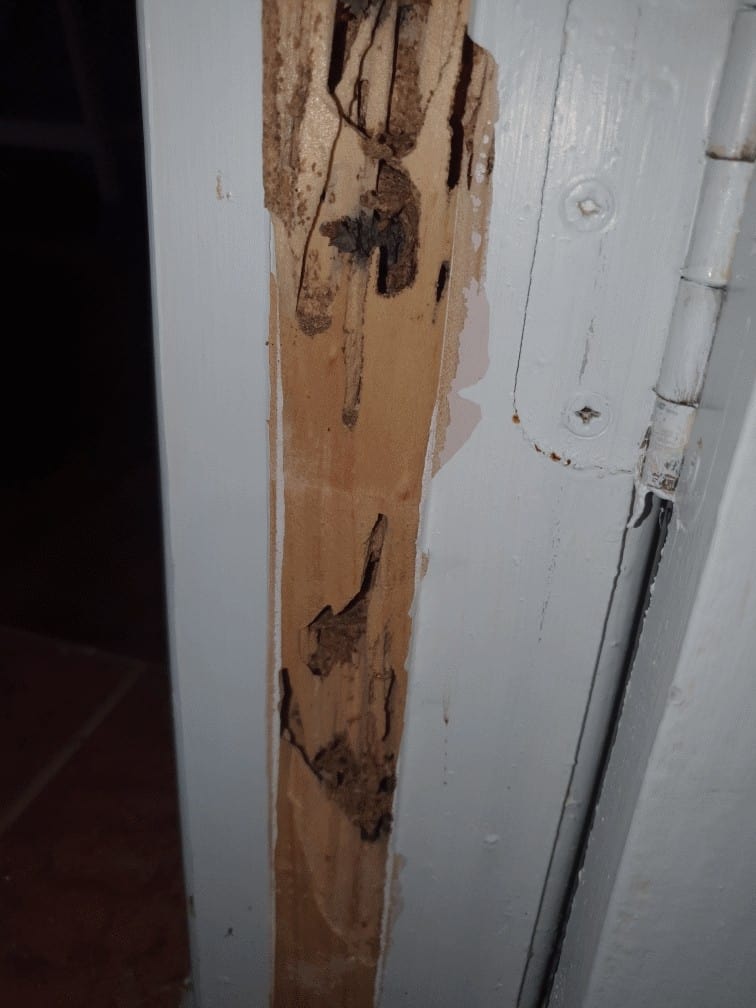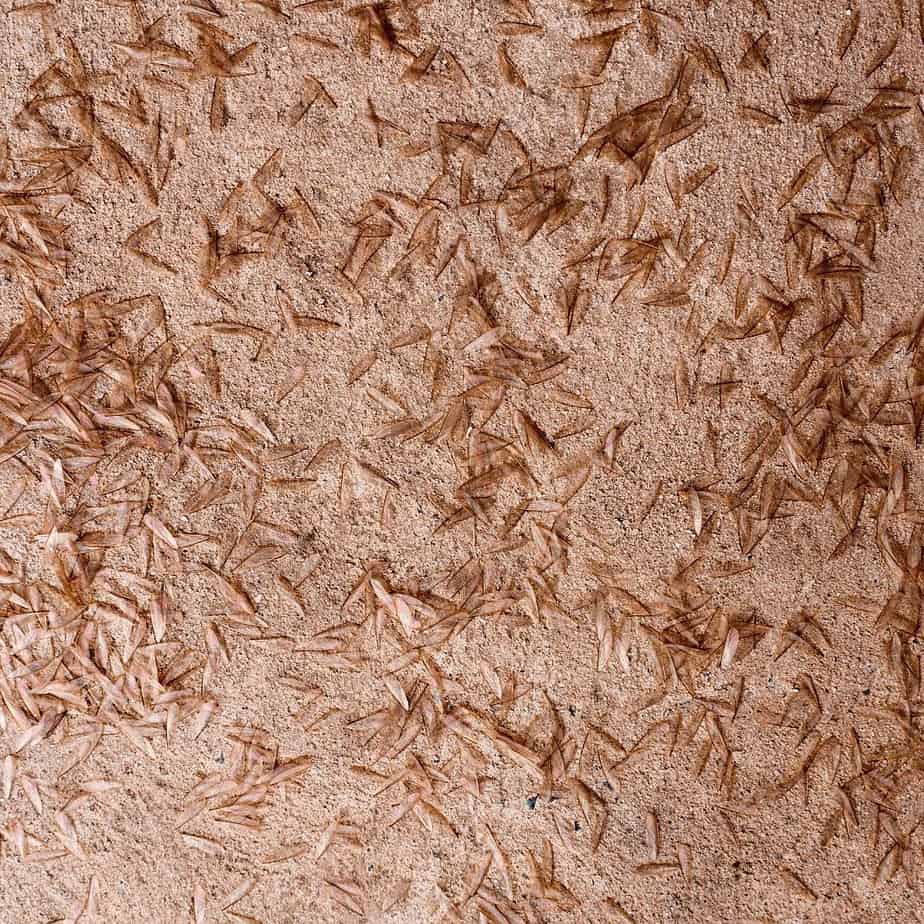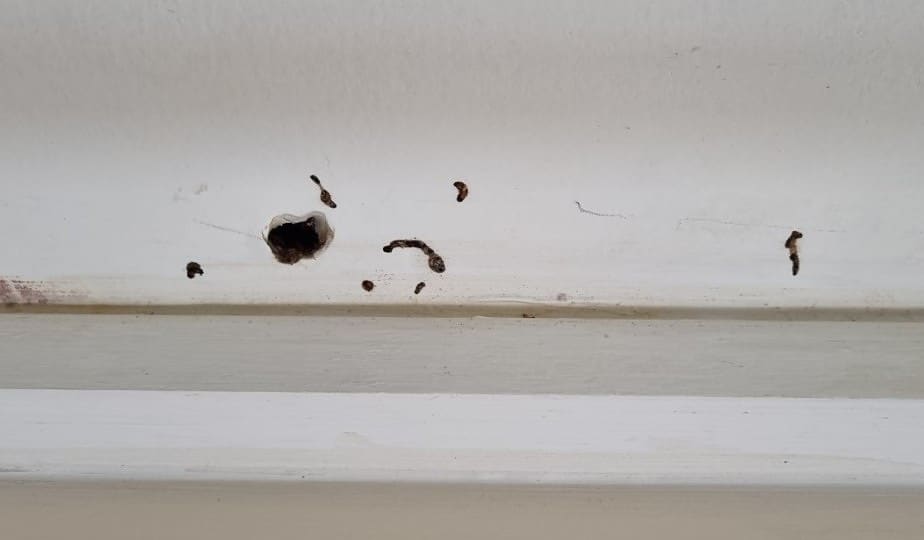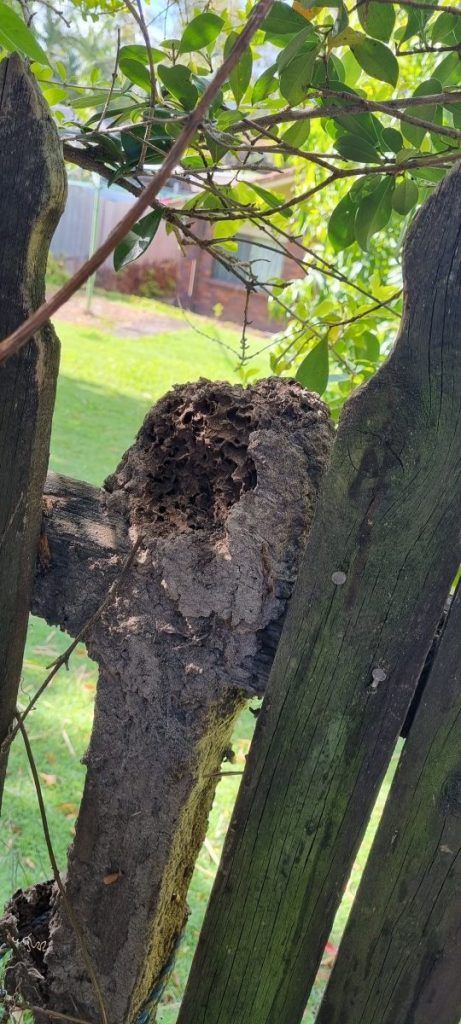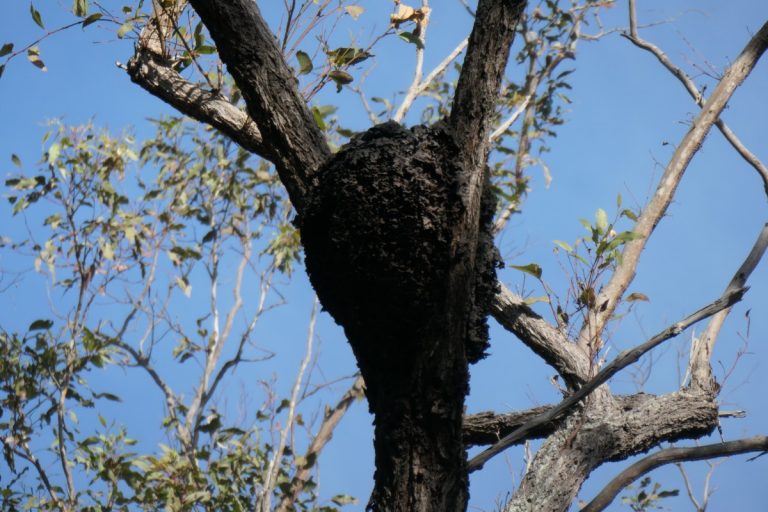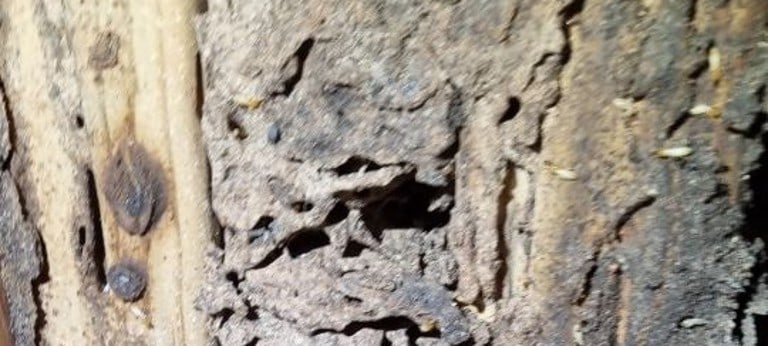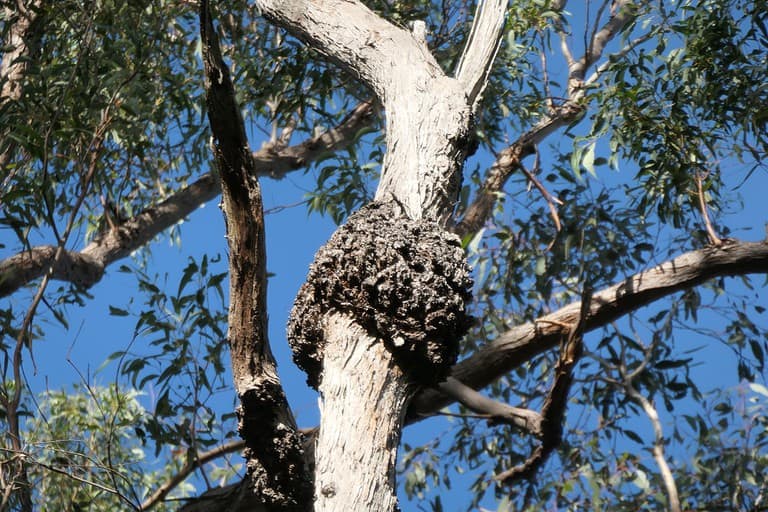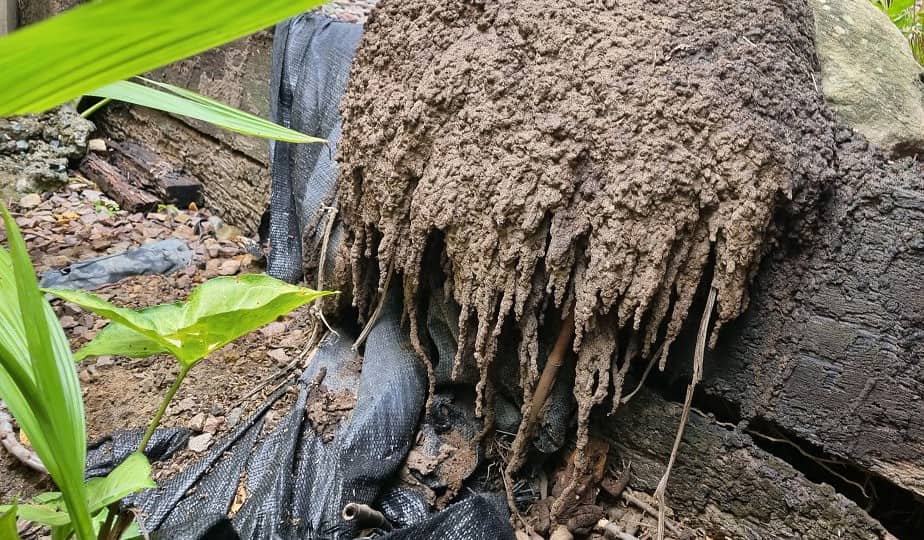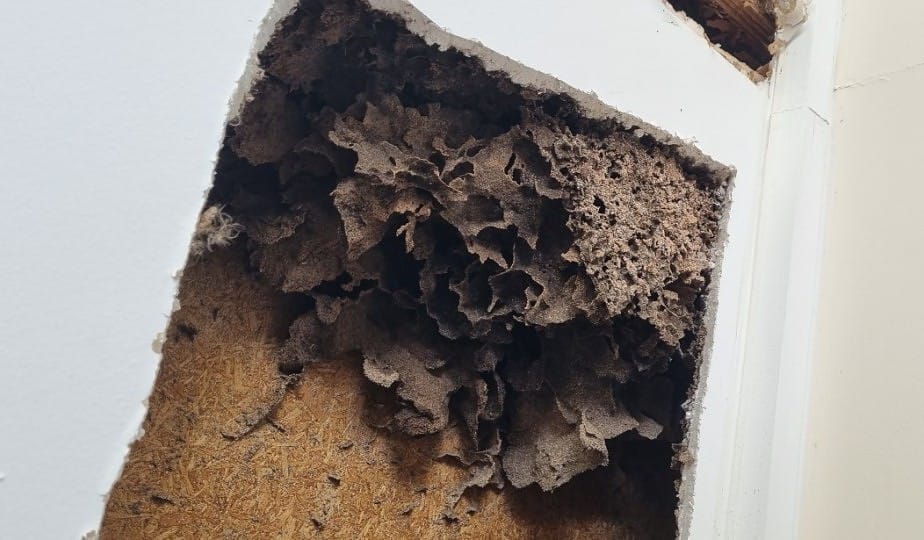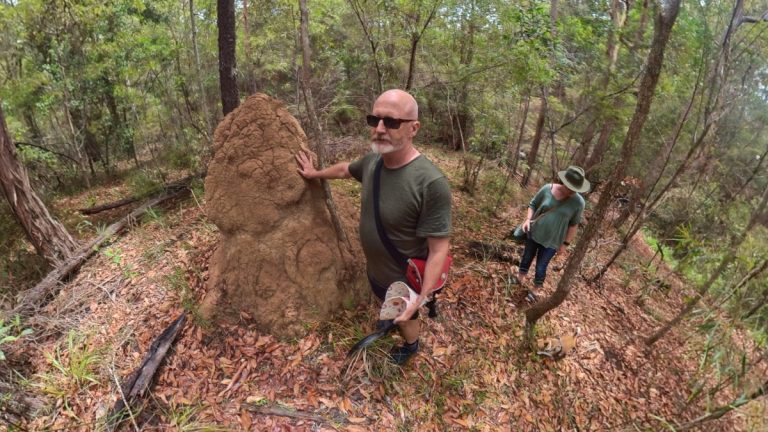What Does A Termite Nest Look Like
And How To Identify Signs Of Termite Activity In Your Home
Table of Contents
What does a termite nest look like? Termite nests come in different shapes and sizes. Some are easy to identify because they exist in the trees around your home. Others are subterranean, and hence they’re going to be harder to find. The Australian Museum outlines five main types of termite nests:
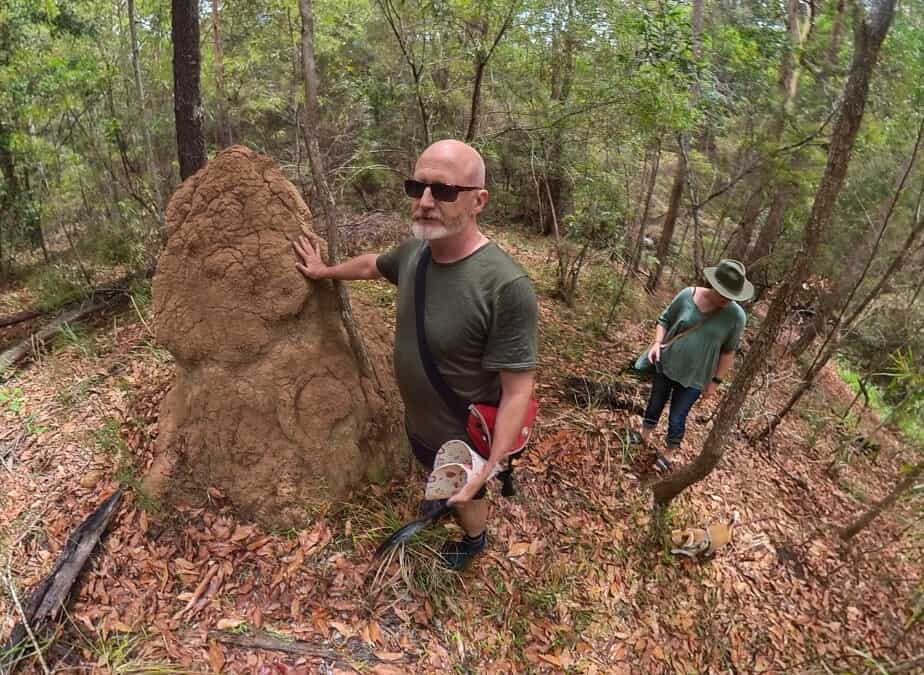
Ground Mounds
These are what many people think of when they think of termite nests. The ground mound is a complex and sophisticated structure made by the termites to home their colony. Seen here is a termite mound found on the southern end of the Gold Coast.
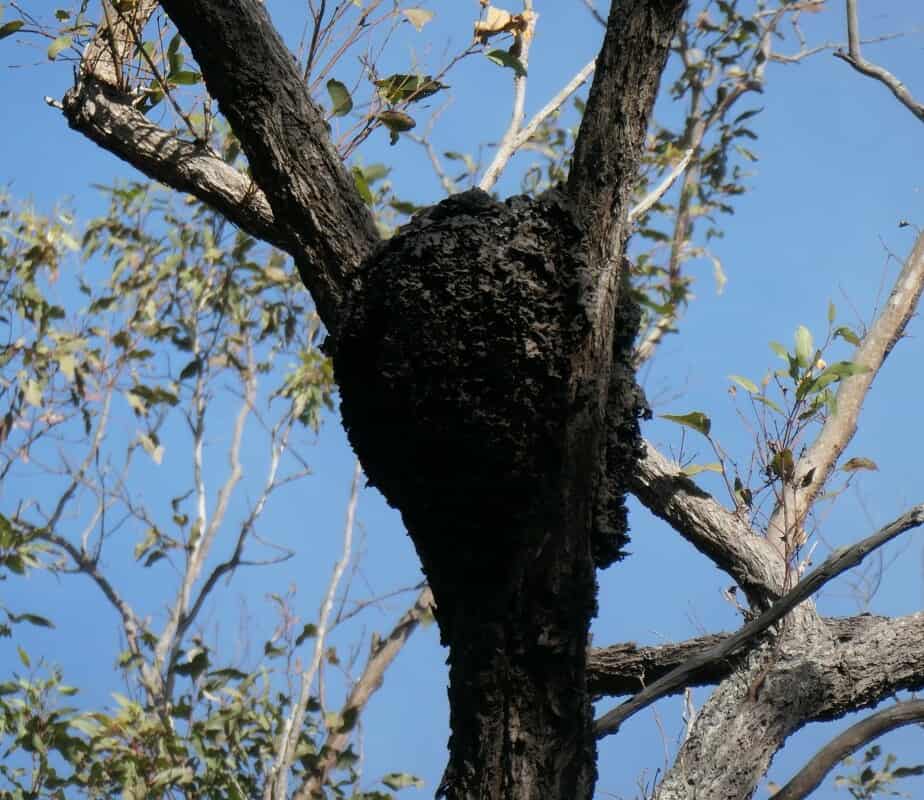
Tree Nests
Tree nests are common around the Gold Coast. These nests are visible as a large termite bowl on the side of the tree. They are connected to an internal cavity in the tree.
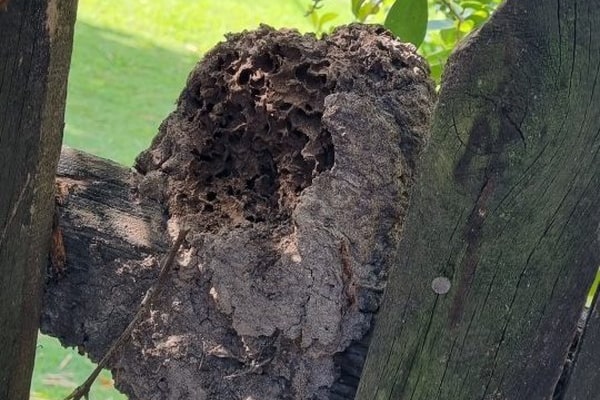
Pole Nests
These occur on human structures such as fence posts (as shown here) or telephone poles. The one shown here was photographed by the Gold Coast Pest Inspector during his inspection of a local property. Inspections don't always discover such obvious signs of termites on a property. See subterranean nests below.

Subterranean Nests
These nests are underground, in soil, stumps and tree bases. What we've shown here is a termite trail leading out of the ground up some bricks and into the home above. While these termites may not have lived in a subterranean colony they will live in the dirt quite happily for extended periods and may pass back and forth to a colony located nearby. That colony might live in one of the nest types shown above.
The most common termite nest here in South East Queensland are those of the subterranean termite. As the name would suggest they build their nest underground, in the soil where the moist warm conditions are ideal to their survival. These are also the trickiest to identify.
Got termites?
it's time to book an inspection.
So what does a termite nest look like? Here are some examples of the type of termite nest you might see. (There are more at the end of the article.)
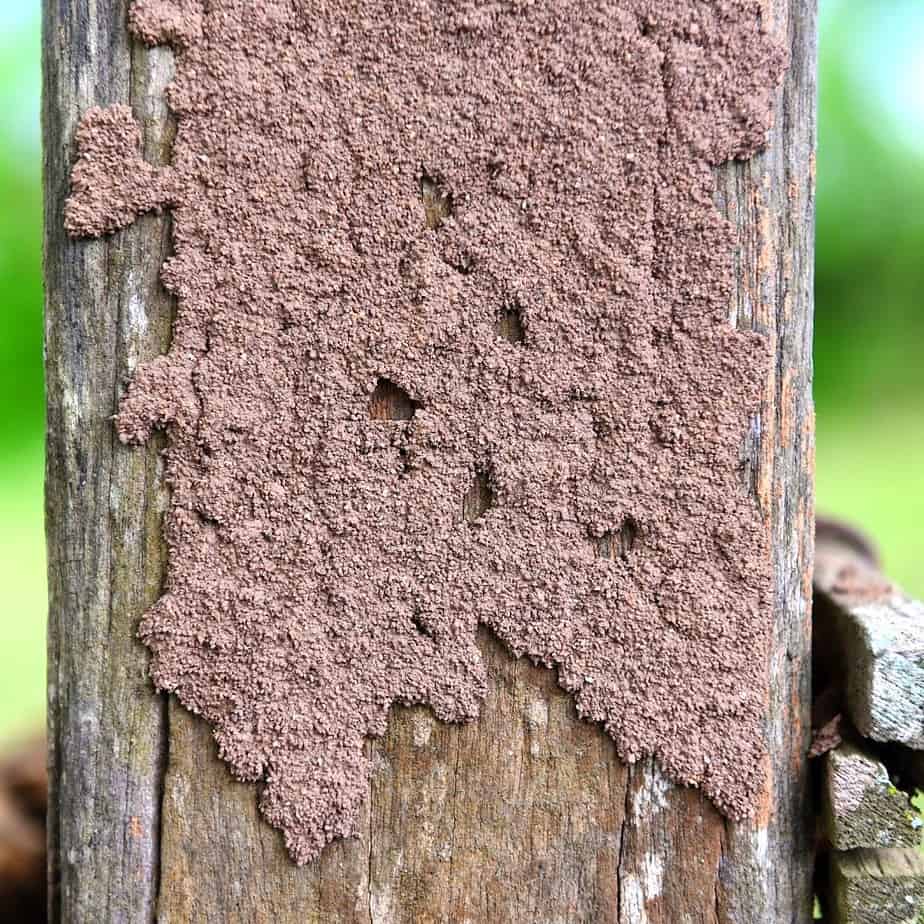
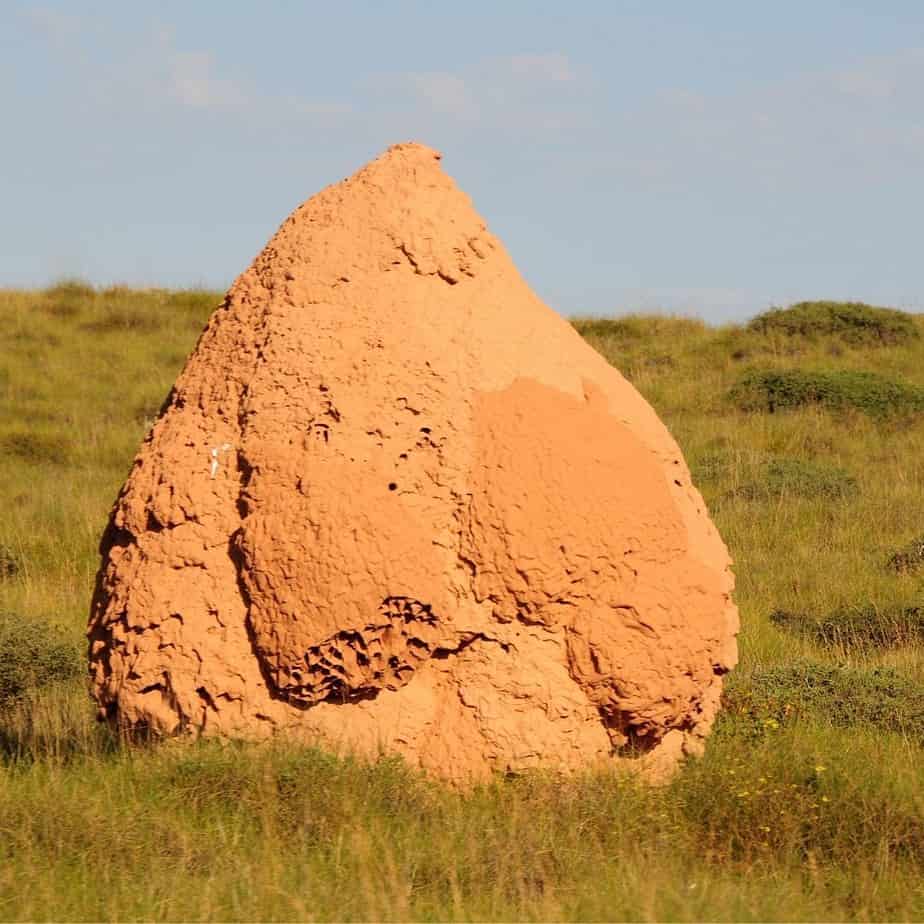
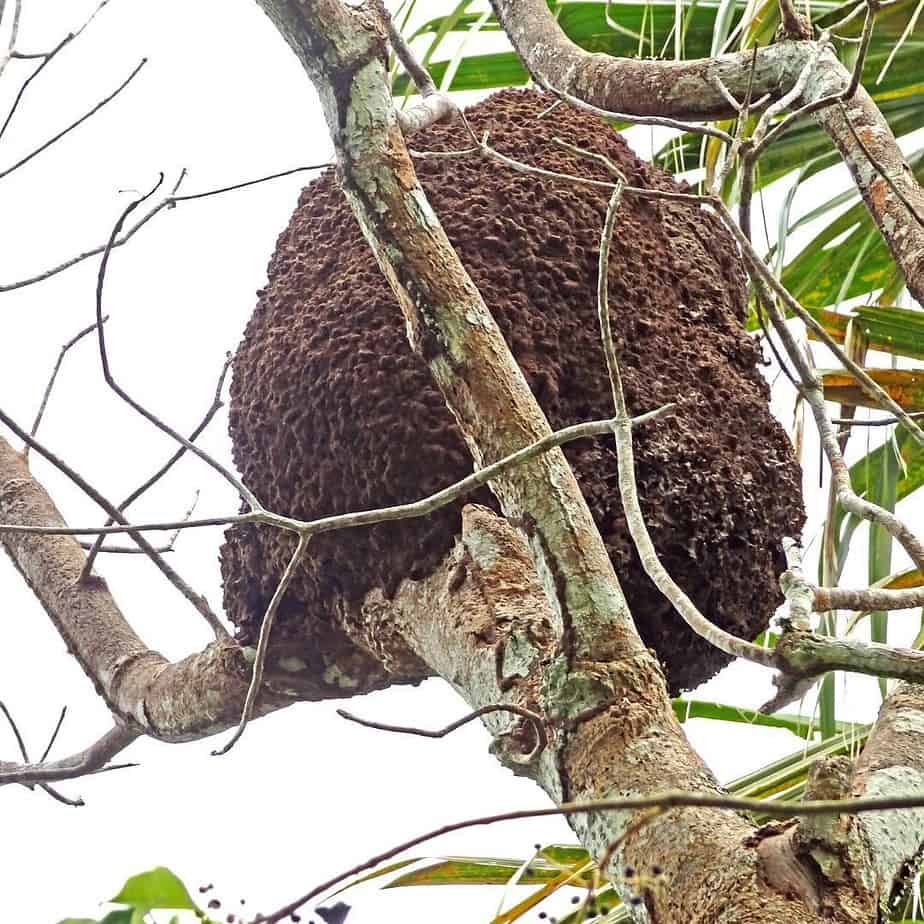
Got termites?
Termite Activity
Signs of termite activity
Termites cause billions in damage every year. With most termite nests hidden underground while the termites go about their business inside the walls of the home, by the time the termites have been discovered it is often too late for the homeowner. It can be a very expensive fix and very few, if any, insurance companies cover termite damage. (Really, we can’t stress enough, don’t rely on your own ability to spot termites. Get an inspection.)
Signs Of Termites Others Missed
We have a look at some of the things other pest inspectors missed. That includes this termite nest found in the wall cavity of a Gold Coast home.
Here are some signs you may come across that are a good indication of termite activity:
Some More Termite Nest
Time to call a pest inspector
Even if you cannot see any of this evidence of termites there is still a good chance there are some around your Gold Coast property and by the time the damage is noticed, significant structural damage may already be done. It is best to get in first with regular termite inspections from a qualified pest inspector. Give us a call today to arrange a comprehensive termite inspection.

